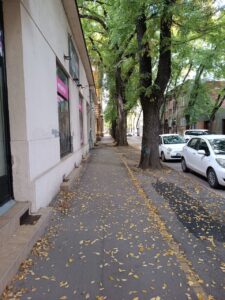Architectural styles: Art Nouveau, Secession, and other styles characteristic of Subotica buildings.
Subotica, a picturesque town located in northern Serbia, is a hidden gem when it comes to architectural beauty. Its rich history and cultural influences have given rise to a unique blend of architectural styles that tell a story of artistic evolution. Among these styles, Art Nouveau and the Secession movement stand out as defining characteristics of Subotica’s landscape, adorned by intricate designs and vibrant colors. Let’s take a walk through the streets of Subotica to explore these captivating architectural styles and understand what makes them so special.
Architectural Styles: Art Nouveau
Art Nouveau, known for its organic forms and intricate ornamentation, emerged in the late 19th century and quickly found its way to Subotica. The movement emphasized a connection with nature, often incorporating floral and natural motifs into its designs. This style is characterized by graceful curves and asymmetrical shapes, which can be seen in many of Subotica’s buildings. The interplay of light and color is another hallmark of Art Nouveau, with stained glass windows and tiled facades adding a vivid touch to the architectural landscape.
One of the most iconic examples of Art Nouveau in Subotica is the Raichle Palace. Completed in 1904, this building showcases the style’s typical whiplash curves and floral decorations, making it an essential stop for architecture enthusiasts. The facade features colorful ceramic tiles that reflect the changing hues of the sun, creating a dynamic visual experience. Inside, the palace boasts intricate woodwork and stunning stained glass that further exemplifies the elegance of the Art Nouveau movement.
As you wander through the streets of Subotica, you’ll also come across smaller structures and residential buildings that embody Art Nouveau principles. These homes often feature elaborate wrought-iron balconies and detailed moldings, creating a whimsical atmosphere that invites admiration. The attention to detail and craftsmanship in these buildings serve as a reminder of a time when architecture was not just about functionality, but also about artistic expression and beauty.
Secession Movement
In the wake of Art Nouveau, the Secession movement emerged, bringing with it a focus on individuality and innovation. This style, rooted in the broader European context, found its voice in Subotica through the local interpretation of modernist principles. Secessionist buildings are often marked by their geometric shapes, clean lines, and a minimalist aesthetic that stands in contrast to the ornate features of Art Nouveau. This movement sought to break away from historical styles and embrace a new, forward-thinking approach to design.
One of Subotica’s most prominent examples of the Secession style is the Synagogue, completed in 1902. Its striking design features bold lines and a distinctive dome, showcasing a blend of modernist influences and traditional Jewish motifs. The use of vibrant colors and unique forms demonstrates the innovative spirit of the Secession movement, as architects aimed to create spaces that were both functional and expressive. The Synagogue remains a vital part of the town’s cultural heritage and an architectural landmark worth visiting.
Moreover, the Secession movement in Subotica extends beyond religious buildings. Several residential complexes and public structures reflect its principles, often featuring simplified facades and an emphasis on horizontal lines. The integration of local materials and craftsmanship into these designs underscores the movement’s commitment to authenticity and regional identity. As you explore Subotica, you’ll find that the Secession style seamlessly blends with its surroundings, creating a harmonious architectural dialogue with the city’s rich history.
Other Styles Characteristic of Subotica Buildings
While Art Nouveau and the Secession movement are the most prominent styles, Subotica boasts a variety of other architectural influences that contribute to its charm. The eclectic mix of styles is a testament to the town’s diverse cultural heritage, with elements of Baroque, Neoclassical, and even Modernist architecture present throughout the city. This fusion creates a visually stimulating environment that reflects the historical transitions and socio-political changes experienced by Subotica over the years.
One notable building that showcases this eclecticism is the City Hall, which combines Neoclassical and Art Nouveau elements in its design. The City Hall’s ornate facade features decorative motifs and grand arches, while its interior is adorned with beautiful murals and intricate plasterwork. This building serves as a focal point in Subotica and is a perfect example of how different architectural styles can coexist and complement one another.
Additionally, the influence of local vernacular architecture cannot be overlooked. Traditional Serbian houses with their distinctive gable roofs and wooden accents can still be found throughout the city. These homes, often adorned with colorful shutters and intricate carvings, provide a stark contrast to the more grandiose public buildings, reminding visitors of Subotica’s roots and the importance of its cultural traditions. The combination of various styles creates a rich tapestry that tells the story of a town shaped by its environment and its people.
Subotica’s architectural landscape is a delightful showcase of creativity, history, and cultural blending. The prominent Art Nouveau and Secession styles stand as testament to an era of innovation, while the presence of other architectural influences creates a vibrant atmosphere that enchants visitors. As you stroll through its picturesque streets, you’ll find that each building has a story to tell, inviting you to explore and appreciate the unique beauty of this remarkable town. Whether you’re an architecture aficionado or simply curious about local culture, Subotica offers an unforgettable experience that is sure to inspire.



